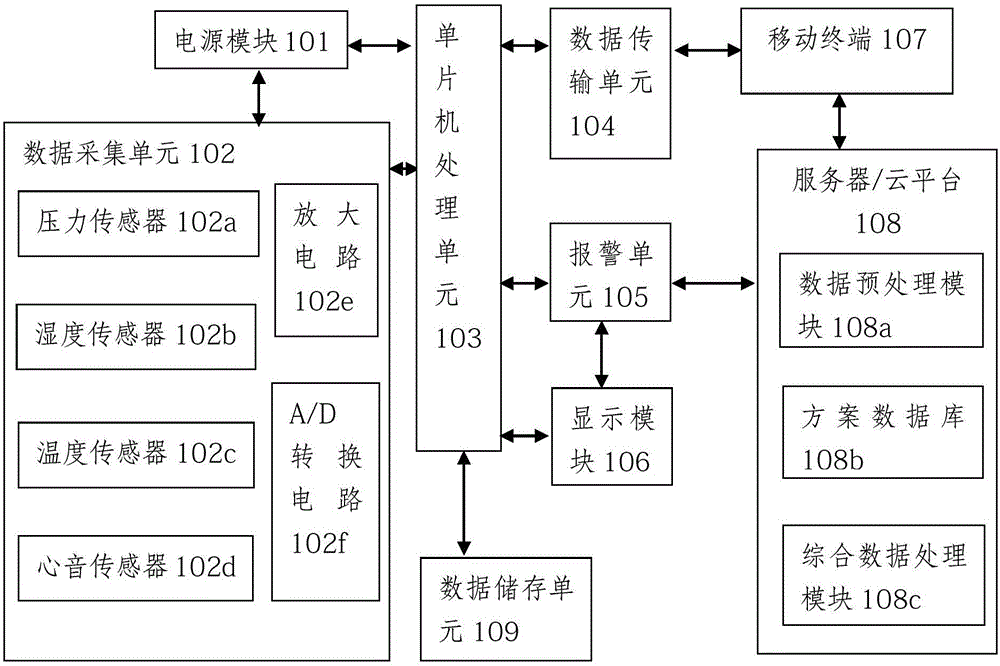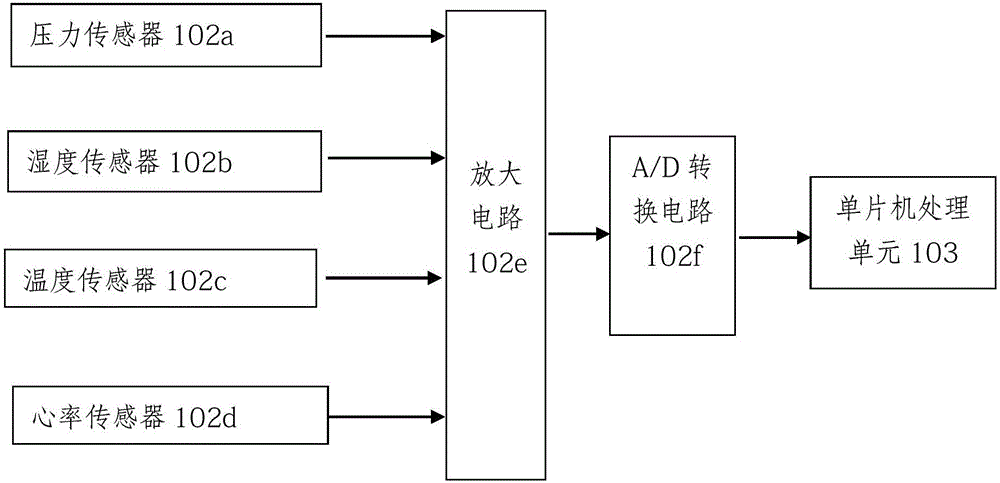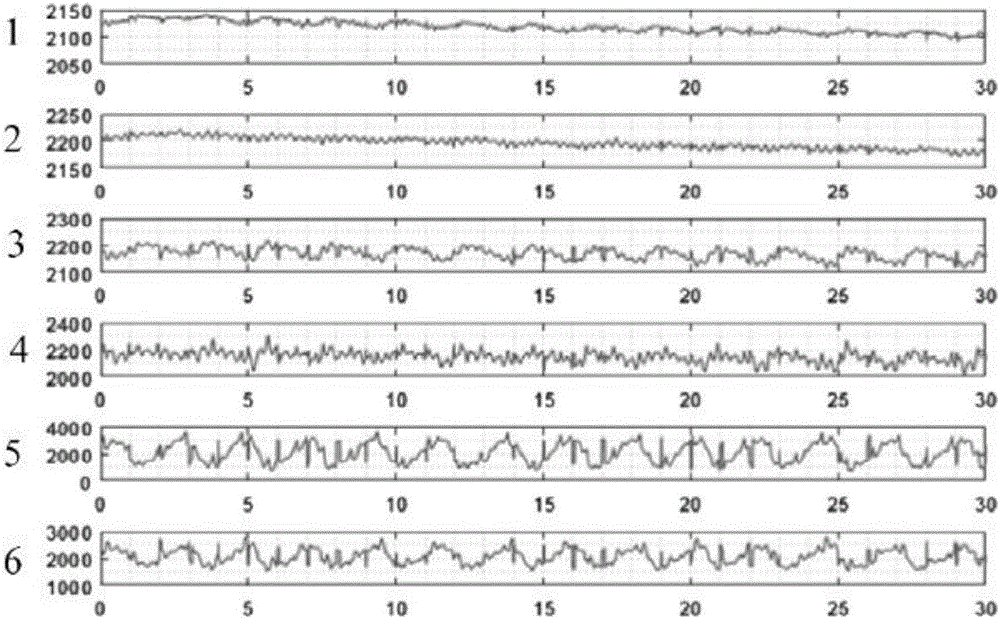Sleep assistance mattress
A technology for assisting sleep and mattresses, applied in the direction of comprehensive factory control, instrumentation, computer control, etc., can solve the problems of lack of real-time monitoring, lack of prevention of cervical spondylosis, etc. The effect of data processing pressure
- Summary
- Abstract
- Description
- Claims
- Application Information
AI Technical Summary
Problems solved by technology
Method used
Image
Examples
Embodiment Construction
[0044] A detailed description will be given below in conjunction with the accompanying drawings.
[0045] figure 1 A schematic diagram of the functional modules of the mattress of the present invention is shown. like figure 1 As shown, the functional modules of the mattress of the present invention include a power supply module 101 on the mattress, a data acquisition unit 102, a single-chip processing unit 103, a data transmission unit 104, an alarm unit 105, a display module 106 and a data storage unit 109. The mattress function module also includes a remote mobile terminal 107 and a server / cloud platform 108 .
[0046] The data collection unit 102 includes a pressure sensor 102a for collecting pressure data, a humidity sensor 102b for collecting humidity data, a temperature sensor 102c for collecting temperature data, a heart sound sensor 102d for collecting heart sound data, and a heart sound sensor 102d for collecting heart sound data. Amplifying circuit 102e and A / D co...
PUM
 Login to View More
Login to View More Abstract
Description
Claims
Application Information
 Login to View More
Login to View More - R&D
- Intellectual Property
- Life Sciences
- Materials
- Tech Scout
- Unparalleled Data Quality
- Higher Quality Content
- 60% Fewer Hallucinations
Browse by: Latest US Patents, China's latest patents, Technical Efficacy Thesaurus, Application Domain, Technology Topic, Popular Technical Reports.
© 2025 PatSnap. All rights reserved.Legal|Privacy policy|Modern Slavery Act Transparency Statement|Sitemap|About US| Contact US: help@patsnap.com



